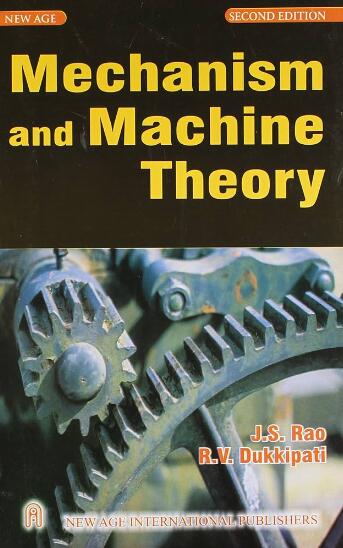非对称纯滚动齿轮的计算机设计与预设计方法的期望功能的空载传动误差
IF 4.5
1区 工程技术
Q1 ENGINEERING, MECHANICAL
引用次数: 0
摘要
提出了一种非对称纯滚动齿轮的计算机化设计方法和利用横向齿廓内旋转主动设计传动误差卸载函数的新方法。建立了非对称纯滚动圆柱齿轮齿面参数化方程。对比分析了法向压力角和螺旋角的不同设计组合,重点分析了接触模式、传动误差、最大接触应力和弯曲应力。确定了最优的设计组合,并与不同法向压力角的对称纯滚动齿轮进行了比较,结果表明该齿轮具有较好的啮合特性和力学性能。此外,该方法基于横向齿廓的内旋转,可以实现传动误差卸载函数的抛物线曲线。通过样机的实验运动学试验,验证了非对称纯滚动齿轮设计的有效性。本文章由计算机程序翻译,如有差异,请以英文原文为准。
Computerized design of asymmetric pure rolling gears with a method for predesigning the desired function of unloaded transmission errors
A computerized design method for asymmetric pure rolling gears and a novel approach for actively design the unloaded function of transmission errors using the internal rotation of the transverse tooth profiles are proposed. Parameterized equations for the tooth surfaces of asymmetric pure rolling cylindrical gears are developed. A comparative analysis of various design combinations of normal pressure angles and helix angles is conducted, focusing on contact patterns, transmission errors, and maximum contact and bending stresses. The optimal design combination is identified and compared to symmetric pure rolling gears with varying normal pressure angles, demonstrating superior meshing characteristics and mechanical performance. Additionally, the proposed method, based on the internal rotation of the transverse tooth profiles, enables the achievement of a parabolic curve for the unloaded function of transmission errors. The effectiveness of the asymmetric pure rolling gear design is validated through an experimental kinematic test of the prototype.
求助全文
通过发布文献求助,成功后即可免费获取论文全文。
去求助
来源期刊

Mechanism and Machine Theory
工程技术-工程:机械
CiteScore
9.90
自引率
23.10%
发文量
450
审稿时长
20 days
期刊介绍:
Mechanism and Machine Theory provides a medium of communication between engineers and scientists engaged in research and development within the fields of knowledge embraced by IFToMM, the International Federation for the Promotion of Mechanism and Machine Science, therefore affiliated with IFToMM as its official research journal.
The main topics are:
Design Theory and Methodology;
Haptics and Human-Machine-Interfaces;
Robotics, Mechatronics and Micro-Machines;
Mechanisms, Mechanical Transmissions and Machines;
Kinematics, Dynamics, and Control of Mechanical Systems;
Applications to Bioengineering and Molecular Chemistry
 求助内容:
求助内容: 应助结果提醒方式:
应助结果提醒方式:


